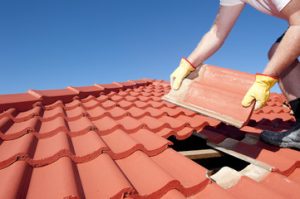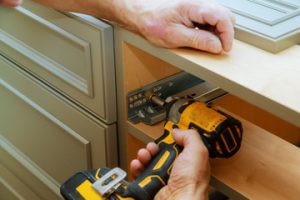Roof Replacement starts with detailed climate adaptation analysis for precise material choice. Every region now demands roofing that responds to wind, rain, and solar intensity. Technicians use weather simulation software before work begins. The goal is a roof tailored to long‑term conditions and exposure.

Project planning integrates drone-mounted thermal scanning to detect heat leaks under existing shingles. These scans guide insulation upgrades during replacement. Technicians map weak thermal zones accurately. Upgraded insulation reduces energy cost post‑installation.
Eco‑substrates are gaining traction beneath traditional shingles. These substrates absorb less heat and reflect infrared rays. They keep internal attic spaces cooler naturally. Replacement now includes reflecting layers as standard.
Custom panel cutting robots are used for accuracy. These machines match roof slopes exactly without manual error. Panels fit seamlessly even on complex roof shapes. It speeds up labor and minimizes material waste.
Waterproof membranes now include self‑sealing properties. When nails puncture during installation the membrane automatically seals around them. It reduces future leak incidents. This innovation boosts roof longevity.
Edge detailing uses ventilated drip edges with air pathways. These allow airflow under roofing edges preventing moisture buildup. Proper ventilation avoids mold and rotting over time. New replacements design air channels beneath drip edges.
Snow‑release coatings are applied on colder roofs. These mimic hydrophobic surface tension so snow slides off safely. They reduce roof loading without mechanical removal. It protects gutters and lower roofing areas.
Replacement crews now install integrated moisture sensors in attic rafters. These sensors detect condensation or elevated humidity early. Homeowners receive alerts via mobile devices. Preventative action avoids structural damage.
Roofers now label seam intersections digitally. RFID tags attached under shingles store installation date and material batch. Future inspections can scan these tags for maintenance records. It increases transparency and traceability.
Replacement designs often feature modular solar-ready mounts. These mounts are pre-installed before placing shingles. It reduces roof penetration later. Future solar installations become plug‑and‑play.
Interior attic lighting is planned before roofing. Skylights and light tunnels are placed using digital modeling. Light paths avoid shading effects and improve brightness. It increases living space value as well.
Repair and replacement crews now test wood deck surfaces with moisture meters before overlay. If moisture exceeds thresholds entire decking is upgraded. This prevents warping or mold under new shingles. Replacement includes substrate health checks.
Fiber-infused underlayment is replacing felt layers. It’s tougher and resists punctures from tools or weather. It binds tightly and resists tearing. It complements modern roofing materials perfectly.
Replacement brackets for satellite and fixture mounts now withstand thermal expansion. They expand slightly without cracking surrounding tiles. This prevents anchor failures over time. The adaptive fasteners are tested in thermal chambers.
Flashings are now pre-formed metal pieces custom bent offsite. They match roof valleys precisely, reducing onsite adjustments. Seam crowding is avoided. This results in cleaner watertight joints.
Airflow modeling tools simulate convection beneath shingles. They calculate hot spots on roofs and propose ridge vent placement accordingly. Proper vent positioning extends roof life. Replacement plans now include airflow optimization.
Replacement crews now color-match shingles digitally on site. Cameras capture existing roof tones in lighting conditions. Matching shingle shades blend seamlessly. No mismatched patches ruin aesthetics.
Roof replacement now includes elastomeric sealants with heat-reactive curing. These cure faster in sunlight exposure. They seal joints without shrinkage. They remain elastic through temperature cycles.
Photovoltaic shield coatings now offer reflective shielding for skylights. They block UV while allowing visible light. They reduce heat gain through glass. Skylight replacement is both functional and energy‑ efficient.
Ice‑beam detectors are embedded along roof valleys. These detectors sense ice accumulation and trigger low‑profile heat strips. They prevent ice dams during freezing events. Homeowners avoid typical gutters overload.
Technicians now orient replacement material to minimize tearing from wind uplift. Wind tunnel data guides shingle lay direction. Overlapping angles are optimized for wind zones. This reduces storm‑related damage significantly.
Nanotechnology coatings are applied to resist algae and moss growth. These coatings embed within the shingle surface. They degrade organic spores and keep roofs clean longer. Replacement includes these treatments as preventative layers.
Structural reinforcement under roofing now includes flexible metal bracing. This supports high seismic or storm zones dynamically. Brace systems absorb roof movement. This innovation protects against shifting during extreme events.
Replacement crews now use laser leveling to verify slope gradient across edges. This ensures water drains uniformly to gutters. Poor drainage points are corrected early. Water pooling risks are dramatically reduced.
Roofs are now replaced with layered cooling vents under tiles. These vents promote convective cooling between the roof deck and shingle layer. The space reduces attic heat and lowers cooling bills. This becomes standard in replacement projects.
During tear‑off, dumpster liners capture debris dust for recycling. The material is then processed separately for shingles, wood, and nails. Landfill waste is minimized. Replacement includes recycling plans automatically.
Dynamic load sensors monitor live weight on the roof during replacement. These sensors alert crews if weight exceeds safe limits. Equipment placement adjusts accordingly. Prevents roof deck overstress during installation.
Rapid-curing adhesives are used under solar panel bases during replacement. These cure under UV in minutes. Crews can proceed quickly to final tiling. New adhesives reduce downtime in hybrid installs.
Liquid sealing beneath shingles is applied with robotic sprayers. This ensures even seal thickness without human variability. It covers valleys and roof hips uniformly. Consistent sealing improves durability significantly.
Replacement includes acoustic-absorbing liners under metal roofs. These liners dampen rain or hail sounds dramatically. They improve interior quietness. This upgrade becomes part of modern replace projects.
Flexible flashing membranes mold around chimneys and pipes better than rigid ones. They adapt to thermal shifts and seal tighter. They prevent water entry even during settling. Replacement includes contour adaptive flashing.
Inspection crews now check wood deck density using ultrasonic probes. These probes detect internal rot without drilling. Weak zones can be replaced selectively. Substrate preservation improves overall structure.
Replacement scheduling incorporates weather forecast APIs. Crews plan tear‑off and installation during weeks with ideal drying conditions. Rain‑checks avoid moisture traps under new shingles. Installation success rates improve.
Synthetic ridge caps replace traditional ridge shingles. These caps flex with roof shape and resist cracking. They interlock tightly to resist wind lift. Replacement includes these for improved ridge longevity.
Gutter interface is upgraded during roof replacement. Seamless metal gutters are welded directly to drip edges. This avoids leaks behind fascia boards. Water management becomes integrated with the roof system.
Solar fan tunnels are embedded within roof deck replacements. These fans activate when attic temperature exceeds threshold. They pull hot air upward through roof vents. Attic ventilation improves automatically post replacement.
Rapid documentation tools now create digital walkthroughs of replaced roofs. Photos, notes, and sensor readings compile into client reports. Clients review installation steps virtually. Transparency becomes part of premium service.
Builders now offer replacement warranties indexed to climatic zones. Warranty covers thermal expansion, wind lift, and hail impact conditions specific to region. Coverage adapts to expected weather events. This elevates client confidence.
Replacement crews now wear ambient‑cooled safety gear. HVAC‑chilled vests keep technicians comfortable in hot weather. Productivity remains high during sunny installations. Worker safety improves without losing pace.
Bi-color shingle gradients are used in replacement designs to match fading patterns. Crews blend lighter and darker tones for natural look. The effect hides age‑related discoloration. New roofs appear organic, not overly fresh.
Illustrated removal plans show roof sequencing to clients visually. These plans help clients track which sections are torn off when. It reduces anxiety and improves clarity. Communication becomes part of premium roof replacement.
Solar rainwater channels are installed with replacement work. These channels direct runoff into storage tanks. No downward scattering stains façade surfaces. It combines roofing and water management into one system.
Future‑proof replacement includes wiring conduits for roof sensors. These include temperature, tilt, and leak detectors. They connect to home automation hubs. Maintenance becomes predictive and proactive.
Roofing now adapts with smart edge strips that indicate uplift risk visually. These strips change hue if wind pressure is too high. Homeowners see signs of potential damage early. Checks before storms reduce emergency repairs.
HAL‑grade coatings add glare reduction to metal roofs. They reflect intense sunlight without heating the surface. Visual glare is minimized while thermal impact stays low. Replacement includes these finishes for comfort and efficiency.
Roof replacement today balances aesthetics, energy, resilience, and monitoring. Each phase integrates technology, sustainability, and precision execution. The result is a roof that performs far beyond expected duties. It becomes a long‑term asset not just shelter.

